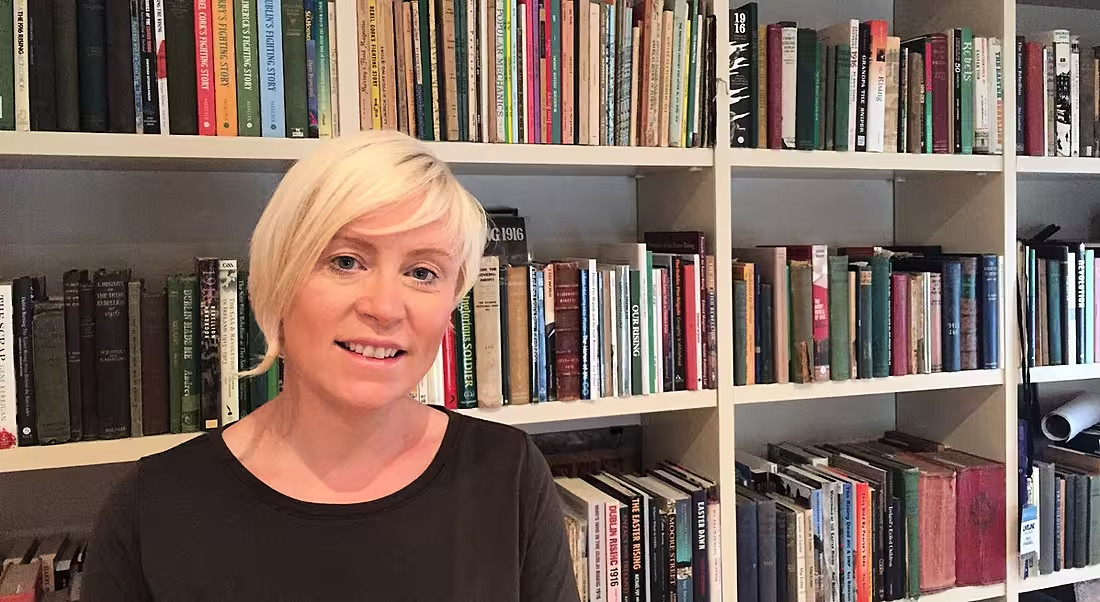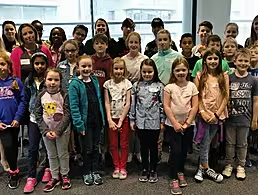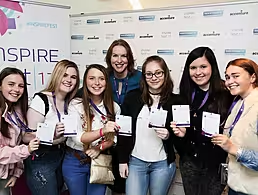There is a talent gap in tech, matched only by the sector’s diversity gap. Amanda O’Farrell, lecturer at IT Tallaght and the woman behind Become an IT Girl, asks why that gap is there, and proposes a way to close it.
Last June, I attended a training course hosted by one of the big names of the online retail world. (Trust me, it’s a name you’d definitely know.) It was a fantastic course, delivered in a very impressive office space – all that you would expect from this type of company. But, as I walked through the building on the first day, I was struck not just by the wide, open spaces, the enthusiastic employees and the impressive tech on show, but by a distinct lack of fellow females!
I thought, at first, that maybe it was down to the particular area of the business I was in, but the more I saw of the building throughout the week I was there, the more I realised that it wasn’t just particular areas that lacked females – it was the entire building! So, on the last day of the course, when we were wrapping up and were asked if we had further questions, I asked: “Where are all the women?”
The response was: “Well, you guys aren’t sending them to us!”
It’s a fair point, and it got me thinking …
I have been a computing lecturer in IT Tallaght for the last 15 years, and I’ve watched the number of females coming in to third level to study computing drop significantly over that time.
About the year 2000 (before my lecturing days), more than 40pc of our computing students were females – students who went on to have great careers and are now numbered among the current generation of leaders in the IT industry. Nowadays, though, our female intake is under half what it used to be, and the older generation of smart female graduates is wondering why the younger generation of female students doesn’t seem to be attracted to the highly interesting, very rewarding and often very flexible careers in IT.
So, in an attempt to try and engage with females at second level – and with the hope of trying to figure out why they don’t choose to study computing – I recently ran the inaugural Become an IT Girl event in IT Tallaght. Transition year (TY) students were invited to come along and listen to some very impressive female speakers, who talked about their journey to their current role in the industry.
While we had the TY girls there, we had them try a bit of app development, and gave them a quick survey to find out their opinions on IT. Of course, this wasn’t a rigorous scientific study, but we did learn some very interesting things from the results, and also from talking to girls’ teachers.
Coding a better education system
Let’s start with what I learned from speaking to the teachers. They told us that second-level girls are very cautious about what they choose to study, and so are very reluctant to choose a course that they have had little or no exposure to during their studies. Because IT isn’t currently part of the Leaving or Junior Certificate cycles – although that’s due to change in 2018 – the girls’ exposure in many cases seemed to depend on whether the school had a teacher that had a personal interest in IT.
Furthermore, it seems that the girls associate IT with maths and coding, and are completely unaware of the types of roles that are possible with an IT qualification – even roles that don’t necessarily involve coding.
The schools are eager to have all their students – not just the girls – exposed to IT, and feel that it should happen as early as possible in second level. We had invited TY students to the Become an IT Girl event, but all the teachers agreed that we should be targeting students in first year.
We also heard that some schools are seriously lacking in their computing facilities, and that many have facilities that are very out of date. So, while we’d love to visit schools and run IT sessions, many of them just wouldn’t have the facilities to support the visit.
So, what did the TY girls themselves have to say? We asked them questions before and after the Become an IT Girl event. Among their comments before the session were: “it’s a male industry”; “it’s not an option in my school because it’s an all-girls school”; and “girls aren’t encouraged to study IT”.
Many of them said they weren’t aware of the types of careers available in the industry. There’s clearly a misperception here, and it seems a lack of role models is a big part of that.
But what about Sheryl Sandberg, Susan Wojcicki, Marissa Mayer, et al? Unfortunately, these examples just aren’t ‘real’ enough for many young girls. They view them as the exception and not the norm. These young girls are exposed to nurses, doctors, guards, chefs and business people as part of their normal lives, but rarely, it seems, do they come across women (or indeed even men) in the IT industry. So we have to get out there and spread the word.
So what now?
At our Become an IT Girl event, we had some fantastic women speakers, including Barbara McCarthy, Hubspot’s director of engineering; Maria Connor, principal QA/agile coach, Paddy Power Betfair; Silvia Nozal, senior software engineer at Paddy Power Betfair; Stephanie Courtney, software engineer at IBM; and Gillian Dunne, QA engineer at IBM. They spoke about their current roles, how they got there and why they enjoy working in IT – and the TY students loved it. One attendee described listening to them as “inspiring”.
We then asked the girls to fill in the after section of the survey, and many said that Become an IT Girl had changed their perceptions of the IT industry. They could now see themselves in these roles. In terms of encouraging girls to study IT, they all agreed that success is about spreading the word, and getting out to schools to run workshops.
So, if the company you work for is serious about gender diversity, encourage them to engage with a local school or college. Ask them to allow you time off to speak at these events. Suggest sponsoring an event. Organise and run a workshop or camp. Any of these small things can make a huge difference.
Amanda O’Farrell has been a lecturer in the Department of Computing at IT Tallaght since 2002, specialising in Cisco networking, Java programming and agile methodologies. She has taught at undergraduate and postgraduate levels. O’Farrell has a particular interest in promoting gender diversity, and indeed all types diversity, in IT.
The second Become an IT Girl event will take place in IT Tallaght in the first week of November 2017. Please get in touch with O’Farrell if you wish to be involved. Follow @BecomeAnITGirl on Twitter, where O’Farrell will be spreading the word on future happenings and events in the IT for girls space.
Interested in paying it forward? For just €5,000, your company can sponsor a group of young people or a disadvantaged group to attend Inspirefest 2017, Silicon Republic’s international sci-tech event. Find out how to sponsor here.




